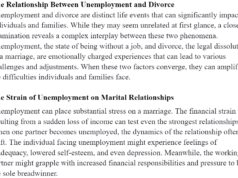SPONSORED CONTENT
One of the most common refrains heard is how chronically underfunded and stressed the Social Security Disability Income system is, and because of that, many groups often try to come up with ways to privatize parts, or all, of the program to reduce the need for public funding, as well as to reduce perceived instances of fraud by reducing the size of the system responsible for adjudicating claims.
To that end, several groups have put forward proposals recently that would seek to either completely privatize the Social Security Disability Income (SSDI) system or to shift a portion of the burden for coverage onto employee-paid plans. These plans were reviewed by the Government Accountability Office (GAO), which determined that none of the plans presented were detailed enough to provide an accurate picture of the impact such changes would have on the SSDI system, either in the short-term or in the long-term.
“Social Security Disability Income is a program that is paid into by employees and employers, in amounts based on the worker’s income,” said Lawrence Disparti, a Disability Attorney with Disparti Law Group. “Generally speaking, in order to be eligible to apply for SSDI, an individual must have earned at least 40 employment credits during the course of your career, with 20 of those credits having been earned within the 10 year period preceding the year of disability. Credits are awarded based on wages earned and are only awarded for positions covered by Social Security. The number of credits you have earned and your reported wages determine your possible SSDI payment.”
Assuming an individual has the appropriate number of credits, they must then prove to the Social Security Disability application reviewer that they are completely and totally disabled – being unable to do the job they had done prior to disability, and that because of the disability they cannot adjust to a different line of work. Finally, the disability must be expected to continue for at least another 12 months.
“Many other factors go into the determination of an individual’s disability, including the individual’s age, education, experience, and other types of work that the individual may be able to perform,” said Lawrence Disparti. “Qualifying for SSDI is no easy task, and it is highly likely that any partial or full privatization of the program will only make qualification that much more difficult, as insurance companies aren’t in the business of freely paying claims.”
Even a partial privatization will result in a decrease in the approval of valid disability claims and may also lead to reduce coverage for workers. The plans reviewed by the GAO focused on shifting the cost burden as opposed to improving outcomes.
There are certain parts of the social safety net that simply cannot be compromised. Ensuring that disabled workers continue to have some income takes the pressure of many other different areas of support. Privatization of a program where the claims of fraud and abuse have been consistently misstated and inflated would simply ensure that those most vulnerable to disability have even less certainty in terms of coverage.



 Sign up for the Blue Virginia weekly newsletter
Sign up for the Blue Virginia weekly newsletter








